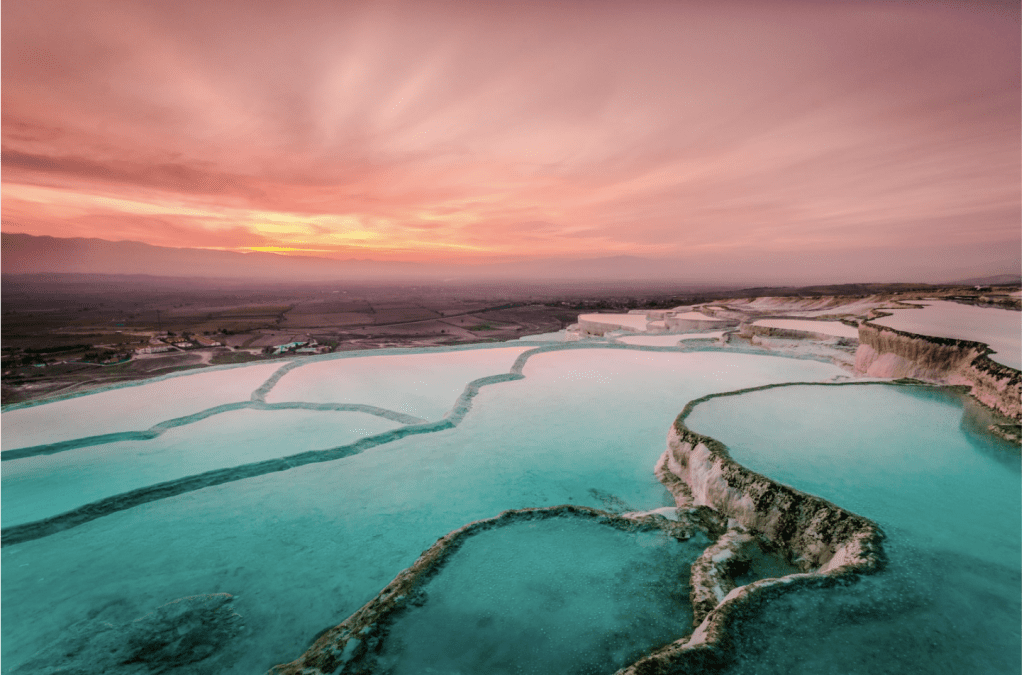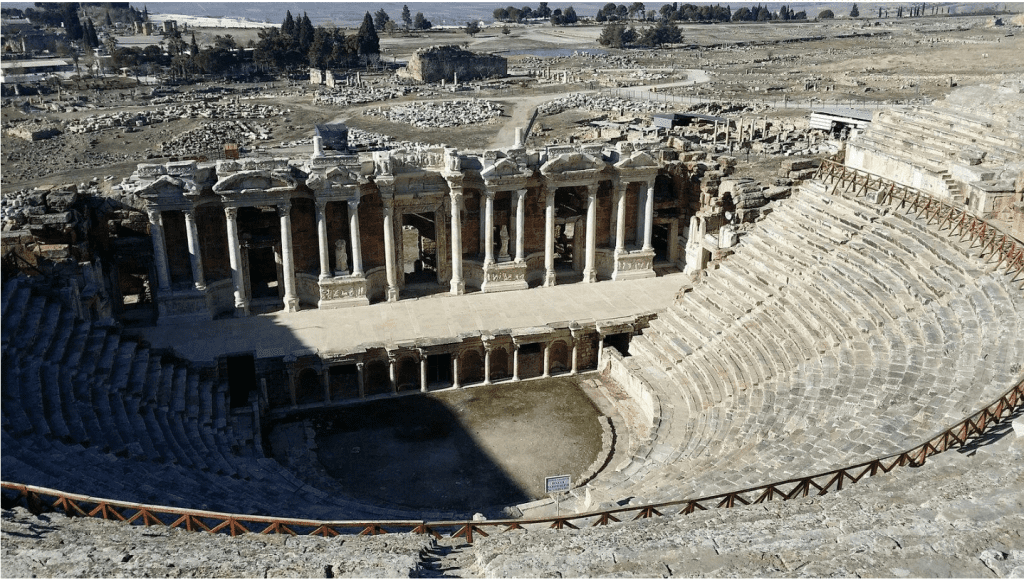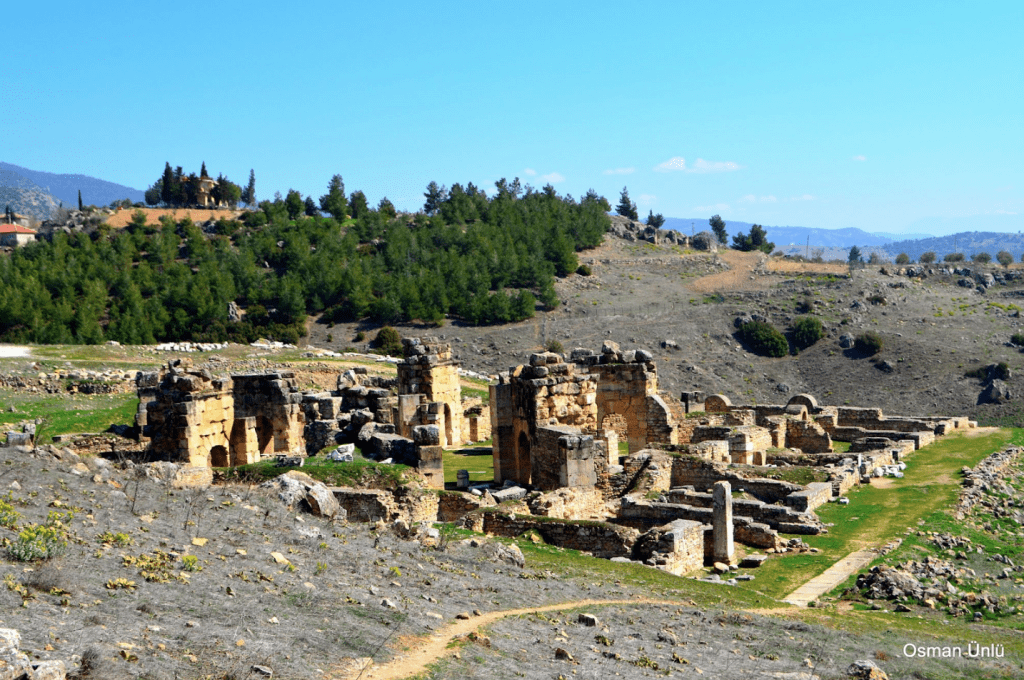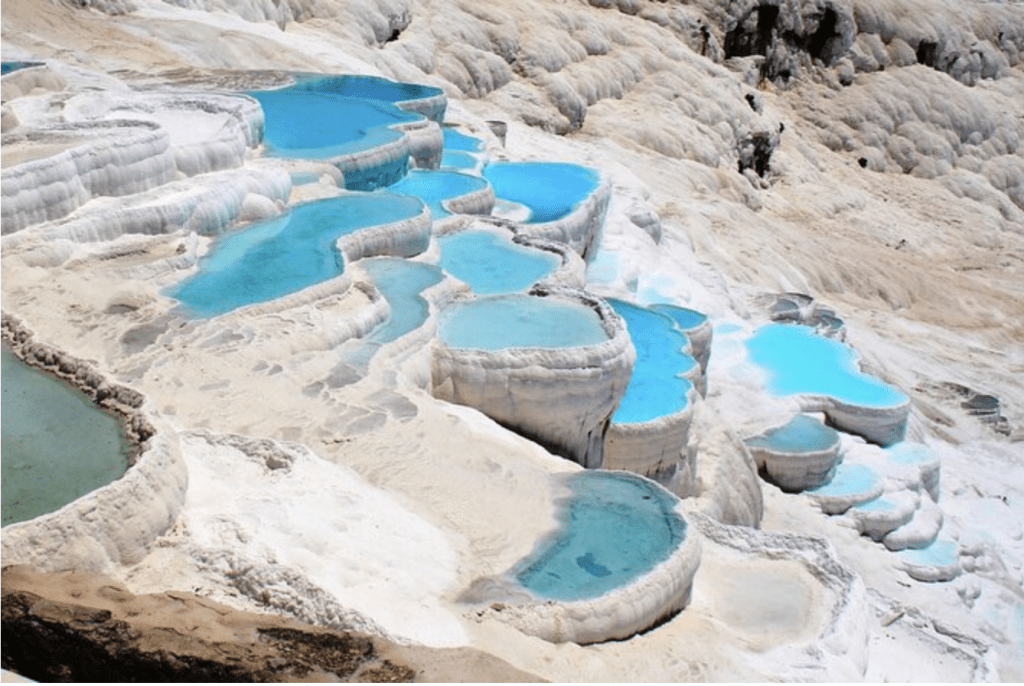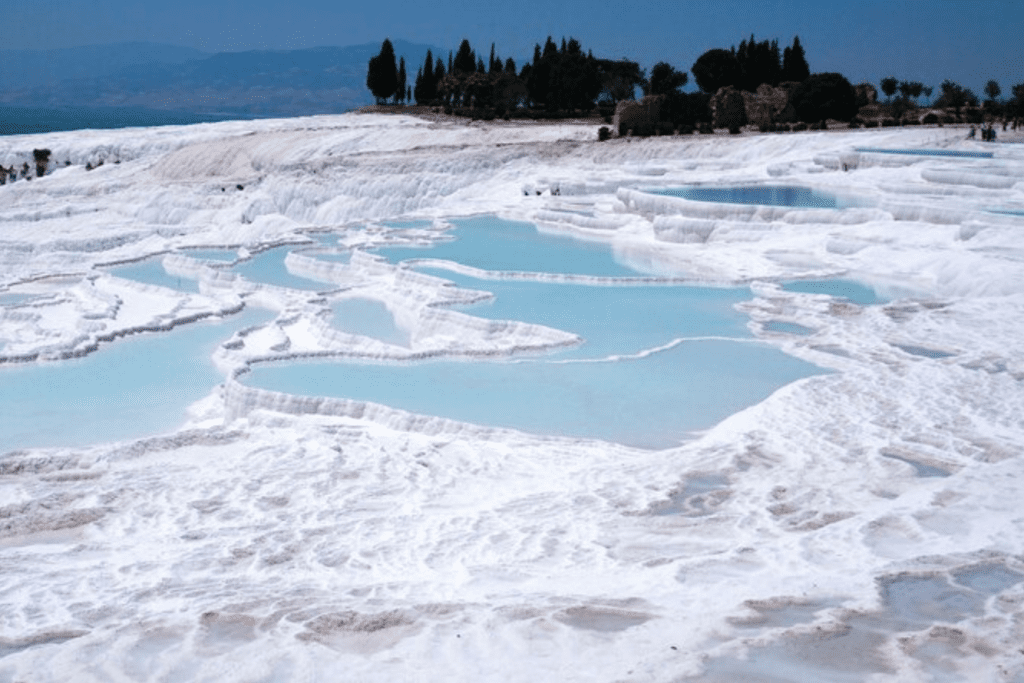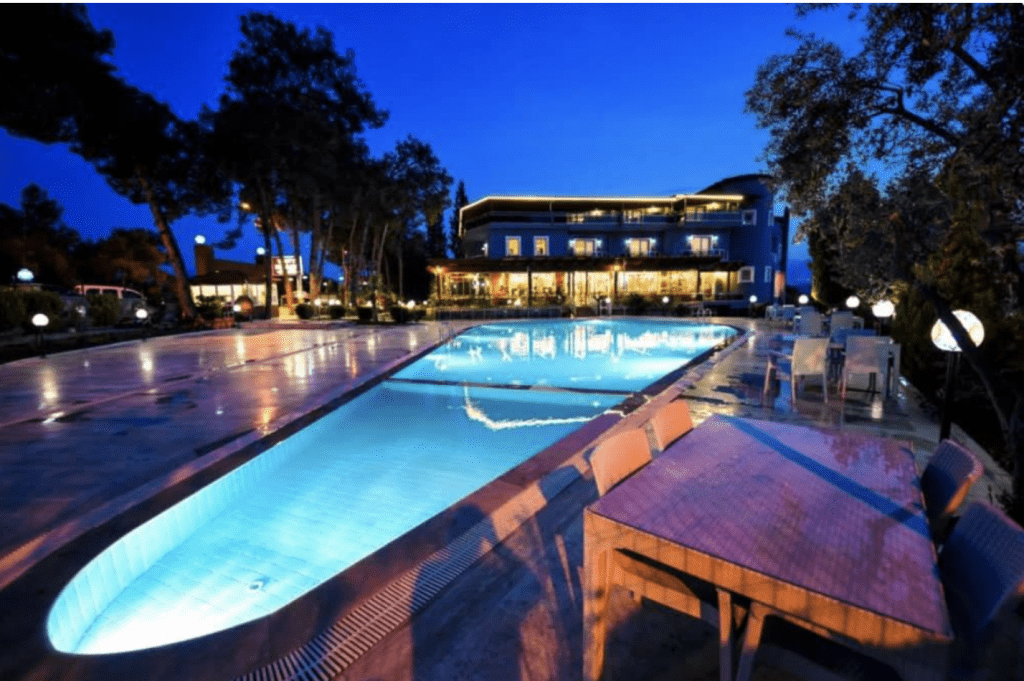Welcome to Turkey Milestone #5: Hierapolis!
In the Bible….
The Apostle Paul mentions Hierapolis in his letter to the Colossian believers. Before closing his letter, Paul mentions Epaphras as one who encouraged and worked for believers in Hierapolis. Colossians 4:13
A Few Quick Facts…
- Hierapolis means “sacred city” and suggests that the site may have been a temple village.
- The Seleucids founded the city as a Greek city in the Third Century BC, using a Hippodamian grid plan (a city with streets that resemble a grid).
- It is thought that Antiochus III was the founder of Hierapolis. He also settled Jews in Phrygia and in Lydia. He also helped establish Laodice.
- 188 BC – After the Peace of Apamea, the city passed to the Attalids.
- In 60 AD, a devastating earthquake struck the province of Asia and caused great damage to the city.
- This site is best known for its mineral hot springs. As a result, there are white calcareous travertines.
- The white terraces are noticeable for a long distance.
- City was also noted for its textile industry.
- Menorahs and other Jewish symbols are present. They decorate some of the Sarcophagi and tombs in the necropolis (dead city). They suggest the presence of a Jewish community.
- Hierapolis is one of the 3 churches of the Lycus River Valley Paul mentions in his letter to the Colossians.
- Epaphras apparently founded these churches while Paul was ministering in Ephesus (Colossians 4:12, Philemon 23, Acts 19:10). However, it is likely that Paul never visited these churches in person.
Some History Of Turkey Milestone #5: Hierapolis
Hierapolis was an ancient Greek city located on hot springs in classical Phrygia in southwestern Anatolia. Its ruins are adjacent to modern Pamukkale in Turkey and currently comprise an archaeological museum. The site has the Tomb of Philip the Apostle.
The hot springs have been used as a spa since the 2nd century BC. Many patrons retire or even die there. The large necropolis contains many sarcophagi. The most famous is that of Marcus Aurelius Ammianos. It bears a relief depicting the earliest known example of a crank and rod mechanism. The great baths were constructed with huge stone blocks without the use of cement. They consist of various closed or open sections linked together. As well, there are deep niches in the inner section, including the bath, library, and gymnasium.
Hierapolis became a UNESCO World Heritage Site in 1988.
Let’s explore and have some fun in Turkey Milestone #5: Hierapolis
So, let’s kick off the fun with running some stairs in the amphitheater!
Whew! That was hard! Now we cool off in the Cleopatra pools.
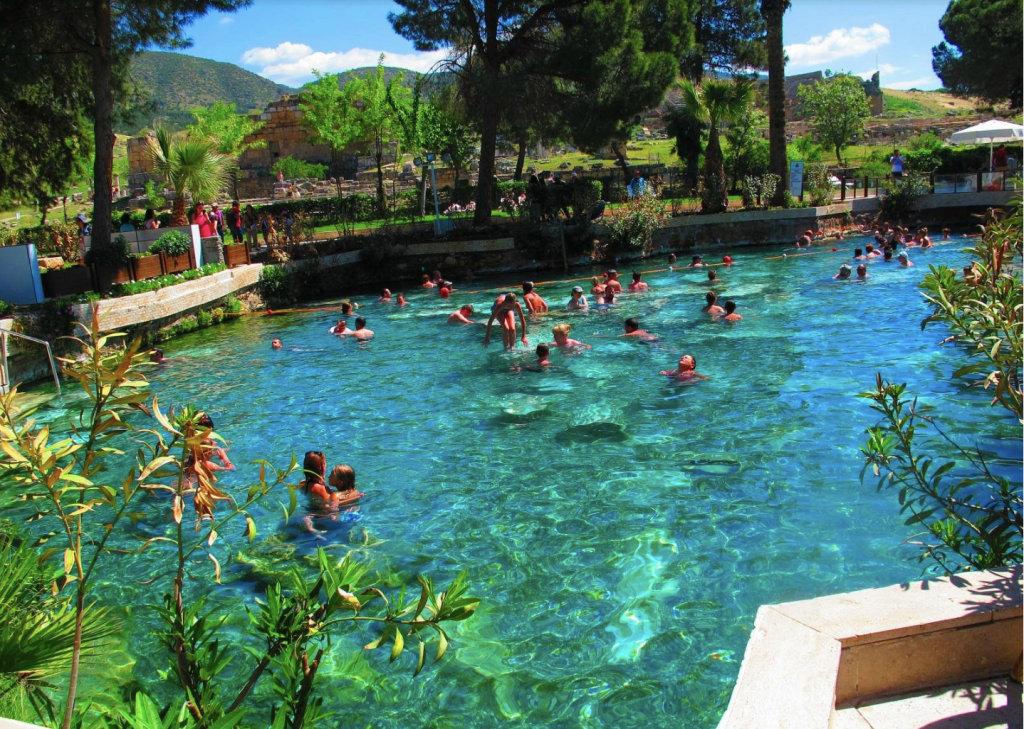
Now, time to hike with some history on the road to Pamukkale.
And finally Pamukkale!
I’m ravenous – How about you?!
This afternoon we will be at Hiera Coffee & Tea House.
What a day! Time for some shut eye at our hotel, Pamukkale Whiteheaven Suite Hotel, before another day of adventure.
Team Challenge for Bonus Points…
Learn a phrase in Turkish this week and you’ll get 1 point deducted for the team. Yes – BOTH partners need to learn the phrase to be able to get 1 point deduction.

